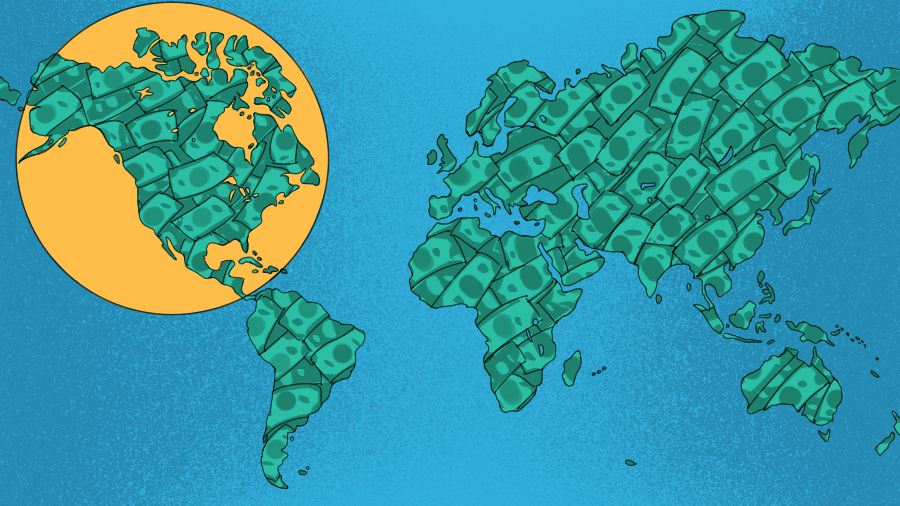When markets have been going up for a very long time, a flattening trendline can sometimes seem reassuring.
Subscribe to the Crunchbase Daily
After all, growth streaks don’t last forever. And while investment isn’t rising, at least it’s not collapsing.
That, in massively oversimplified terms, is our general sentiment regarding the state of North American startup funding in the second quarter of 2019, based on Crunchbase data. Investment is chugging along at historically high levels, but not really accelerating.
Overall, Crunchbase projects that U.S. and Canadian ventures raised $34 billion across all investment stages in Q2 of this year. That’s down incrementally from Q1 but up a bit from year-ago levels.
Parsing the data a bit more closely creates a more bullish picture. Projected seed stage funding was actually up quite a lot in Q2 from Q1. Early and late stage investment also rose a bit, with a slowdown in technology growth-stage deals accounting for most of the quarter-over-quarter declines.
It was a big quarter for unicorn exits as well, with Uber, Slack, Pinterest, Zoom and other high-profile companies hitting the public markets. Market reception for those offerings ranged from spectacular to so-so, with no major meltdowns, boding favorably for IPOs in the wings.
Below, we pick apart the numbers in more detail, focusing on investment at each stage, round counts, and exits.
Seed Stage
We’ll start with seed stage funding. Though seed brings in the smallest dollar total of any investment stage, it’s a crucial indicator of the health of the startup pipeline in producing promising companies for later-stage funding. And so far, the Q2 numbers look pretty healthy.
In the chart below, we look at seed funding numbers by round count and total dollars invested over the past five quarters, including Q2 of 2019.

For the just-ended quarter, Crunchbase projects that U.S. and Canadian startups brought in $1.62 billion in seed-stage funding. That’s a rise of 22 percent from the prior quarter and roughly flat with year-ago levels.
Round counts, meanwhile, are projected to total just over 1,800. That’s the lowest number in the past five quarters, indicating that investors are putting slightly larger initial sums into a slightly smaller pool of companies.
Early Stage
Next up is early stage (Series A and B rounds), which also looks pretty robust. In total, investors put $12.9 billion to work in early stage rounds for U.S. and Canadian companies in the second quarter of 2019, up from both Q1 and year-ago levels.
In the chart below, we look at early stage round counts and investment totals for the past five quarters:

Early stage funding held up at high levels across a wide array of sectors: biotech, security, AI, transportation, even construction. Yet as usual, a handful of really big Series A and B rounds contributed an outsized share of the quarterly totals.
For Q2 of 2019, the biggest early stage rounds per Crunchbase data totalled $150 million each. There were three of them: ElevateBio, a cell and gene therapy startup, SambaNova Systems, an AI computing company, and Klaviyo, a marketing automation provider.
In the chart below, we look at five of the largest early stage rounds of Q2:

Later Stage
Late stage dealmaking was also strong. For Q2 of 2019, investors put down a total of $18.24 billion across nearly 300 funding rounds. That’s higher than both Q1 and year-ago levels, although it’s still significantly below peaks hit in Q4 of 2018.
We look at investment and round count totals for the past five quarters in the chart below:

We hear a lot of news in startup circles about massive rounds for well-known unicorns. However, the data shows that even run-of-the-mill later stage deals are getting bigger.
For the just-ended quarter, the median later stage investment was $40 million — a sum that just a few years ago would’ve qualified as a pretty big round. The median round size is up from $33 million a year ago and flat with the prior quarter.
Meanwhile, giant rounds keep rolling in. There were 42 North American companies that raised so-called supergiant funding rounds of $100 million or more in Q2. Of those, ten companies raised “hypergiant” rounds of $250 million and up. In the chart below, we look at the largest funding recipients:

Technology Growth
Technology growth is the most volatile of the funding stages Crunchbase tracks, and we try not to read too much into its quarter-by-quarter fluctuations.
This category includes jumbo, pre-IPO rounds for the most mature startups. We see just a handful of these deals most quarters, and the occasional really giant round (or absence of one) can really skew the totals.
With that said, Q2 was on the low side, dollar-wise, with $1.23 billion invested across 39 rounds. That’s down dramatically in dollar terms from the $3.23 billion raised in Q1 and well below year-ago levels.

M&A
Overall, Q2 wasn’t a blowout quarter for startup acquisitions. But it wasn’t terrible either.
There was just one multi-billion-dollar deal involving a private, venture-backed company. Looker, a business intelligence software provider, sold to Google for $2.6 billion.
However, there were a few other large deals in the mix as well. Harry’s, the direct-to-consumer seller of razors and shaving creams, sold to Edgewell Personal Care for $1.4 billion. And tech training provider Trilogy Education Services sold to education software company 2U for $750 million.
Marijuana cultivation proved to be particularly fertile ground for dealmaking as well. Publicly traded Curaleaf Holdings announced a deal to buy privately held Cura Partners, the cannabis wholesaler with the top-selling Select brand, for around $950 million, in one of the quarter’s largest transactions. We’ve assembled a longer list of M&A deals for the quarter, also including public companies, here.
IPOs
We wind up our quarterly coverage with a look at the area that probably generated the most headlines and excitement in startup circles: IPOs.
The just-ended quarter was a big one for highly anticipated market debuts. The biggest name on the list — Uber — hit the public markets in May offering that underwhelmed optimistic forecasts but nonetheless raised more than $8 billion for the money-losing ride-hailing market leader.
Other famous unicorn names hit the market as well, along with a number of enterprise and bio-focused offerings. We look at the largest debuts in the chart below.

That’s A Wrap
So, as with every quarter, there are a lot of data indicators, many of them pointing in different directions. IPOs were super strong; M&A was moderate. Investment totals were fairly flat. Deal volume was up quarter-over-quarter, but down some from year-ago levels.
The broad takeaway: There weren’t a lot of signs pointing to either a downturn or increasingly frenzied bullishness among startup investors. The funding climate appears to be holding steady for now.
The big, bullish development, of course, is on the IPO front. Companies that were rumored to be in the IPO pipeline for years are now finally de facto public companies. Post-IPO performance, meanwhile, has been pretty solid so far, with a few companies like Zoom and Beyond Meat notching valuations well above where they initially priced.
Will it continue? Who knows. But at least for now, it appears that for North American startups, the good times continue to roll.
Featured Image: Dom Guzman

Stay up to date with recent funding rounds, acquisitions, and more with the Crunchbase Daily.



![Illustration of a guy watering plants with a blocked hose - Global [Dom Guzman]](https://news.crunchbase.com/wp-content/uploads/quarterly-global-3-300x168.jpg)
67.1K Followers